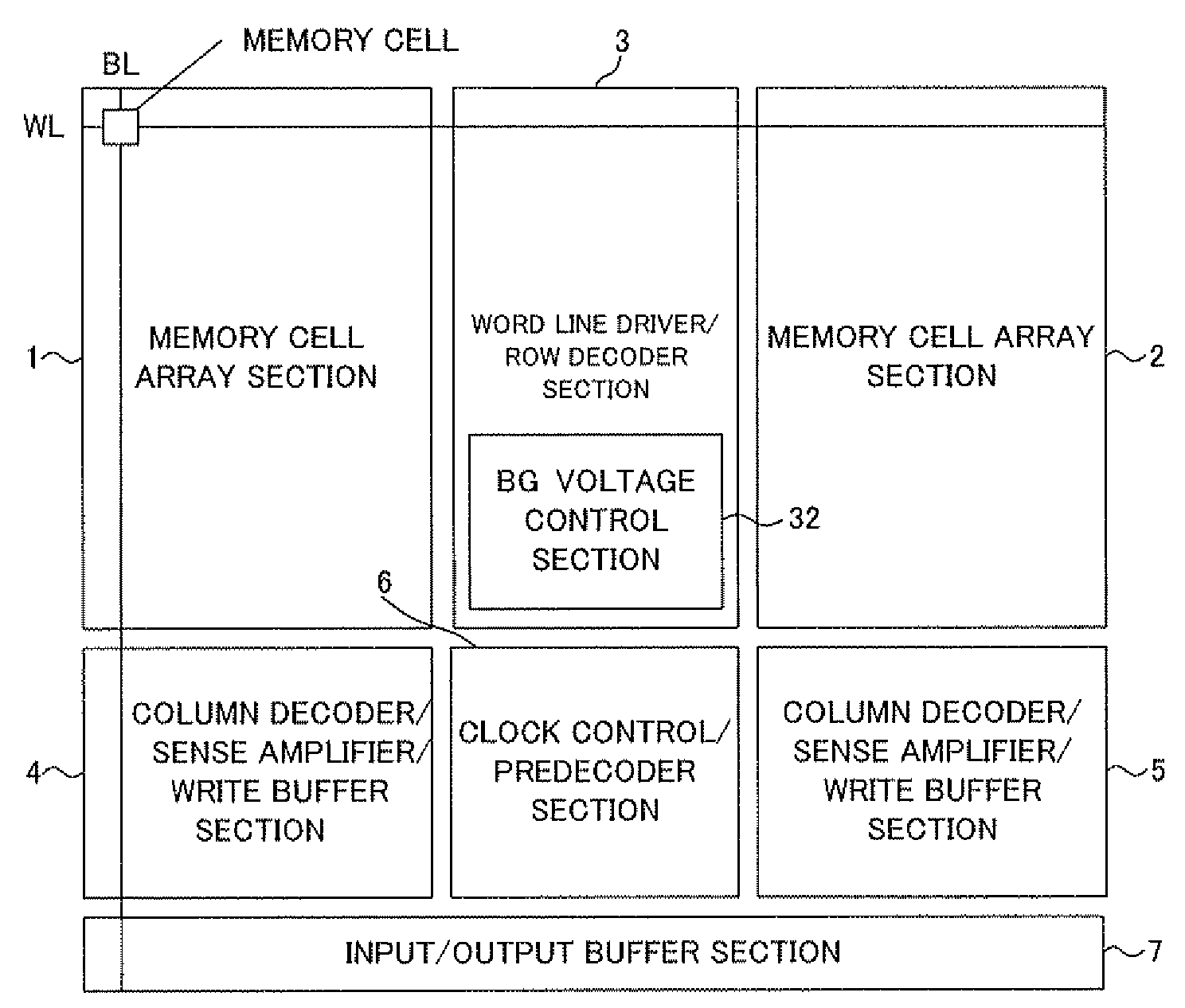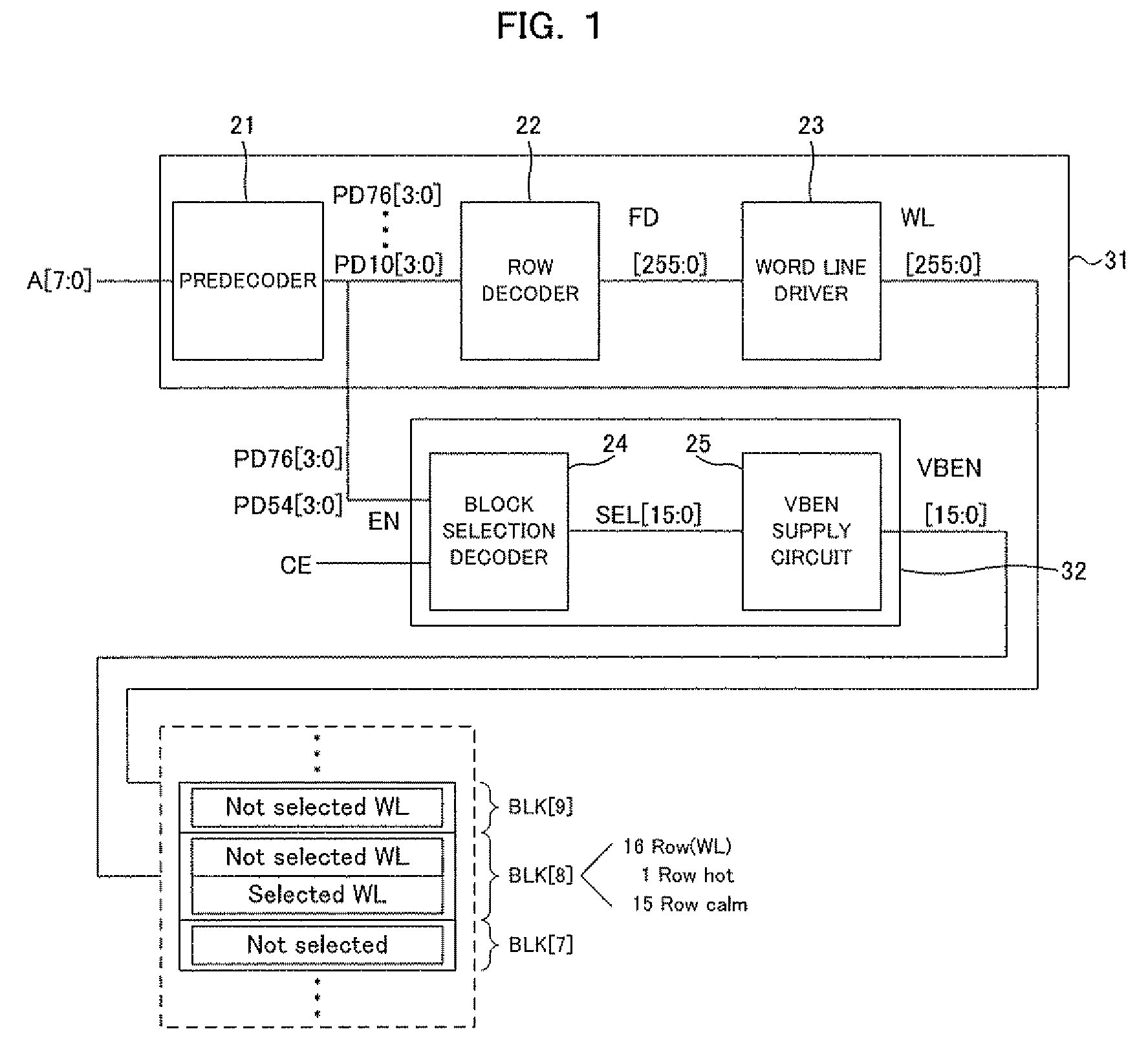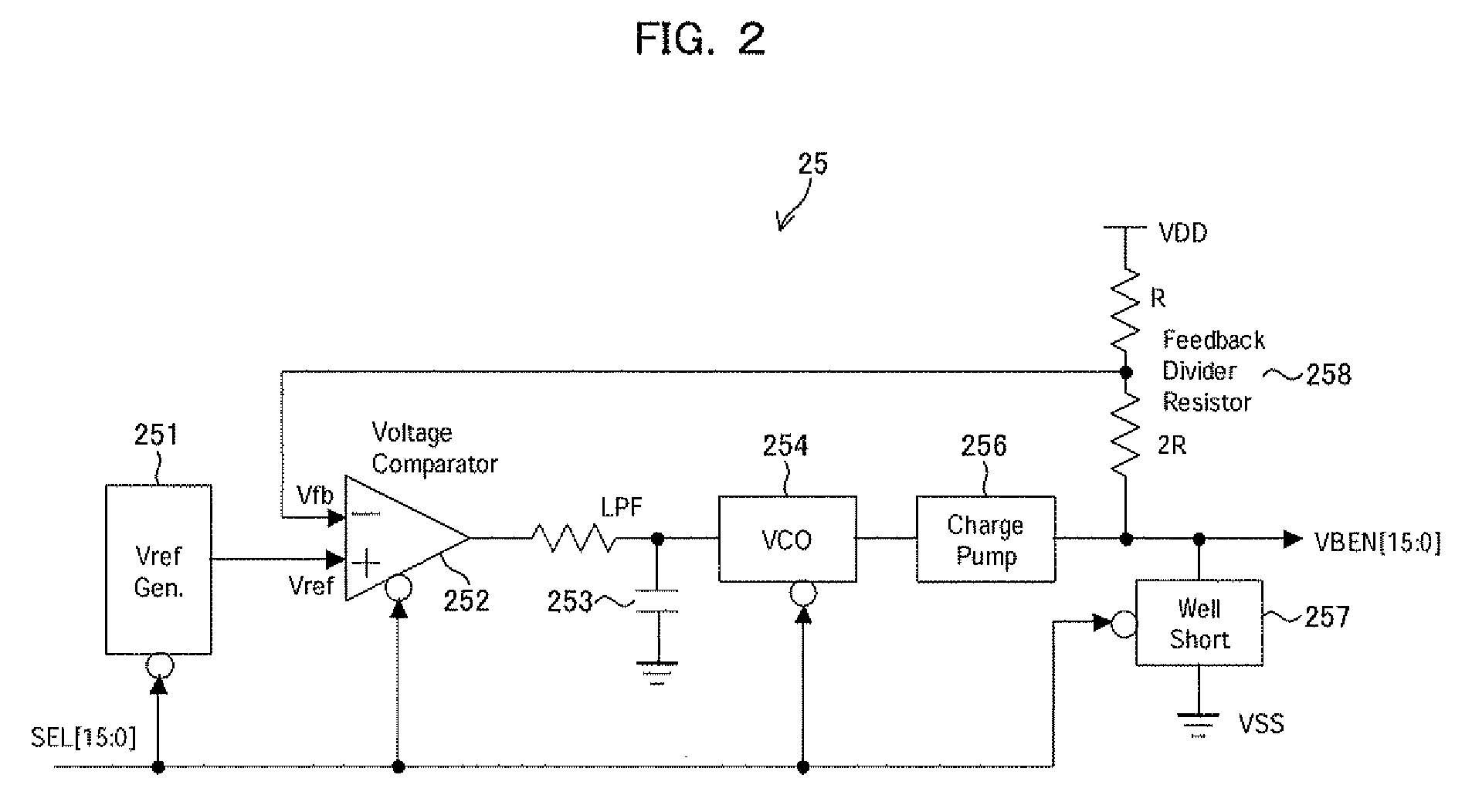Semiconductor memory device
- Summary
- Abstract
- Description
- Claims
- Application Information
AI Technical Summary
Benefits of technology
Problems solved by technology
Method used
Image
Examples
Embodiment Construction
[0025]An embodiment of the present invention will be described below by referring to the accompanying drawings.
[0026]In an embodiment of the present invention, a BG terminal of a transistor constituting a memory cell is disconnected from a VDD or VSS power supply so as to change the potential of the BG terminal depending on selection / nonselection of a memory cell. This configuration allows the threshold voltage of the transistor in a selected memory cell to be reduced to thereby increase drive capability while allowing the threshold voltage of the transistor in a nonselected memory cell to be increased to thereby suppress a leak current. The above configuration can be achieved without the need to make a significant change to the design of an existing semiconductor memory device.
[0027]In the memory cell array, wells of the same type are sequentially arranged in the row direction for convenience of layout. Therefore, when a signal for selecting a row is used as an EN signal to apply a...
PUM
 Login to View More
Login to View More Abstract
Description
Claims
Application Information
 Login to View More
Login to View More - R&D
- Intellectual Property
- Life Sciences
- Materials
- Tech Scout
- Unparalleled Data Quality
- Higher Quality Content
- 60% Fewer Hallucinations
Browse by: Latest US Patents, China's latest patents, Technical Efficacy Thesaurus, Application Domain, Technology Topic, Popular Technical Reports.
© 2025 PatSnap. All rights reserved.Legal|Privacy policy|Modern Slavery Act Transparency Statement|Sitemap|About US| Contact US: help@patsnap.com



